‘The sensual attractiveness of snakes, which coexists with their threatening, unpredictable and mysterious nature is truly unique. This dichotomy, in which their beauty seems to be heightened by their danger, and vice-versa, is what I find so fascinating. Add to these contradictions the rich symbolism of serpents and you have a wonderfully compelling subject’.
Malayan Coral Snake
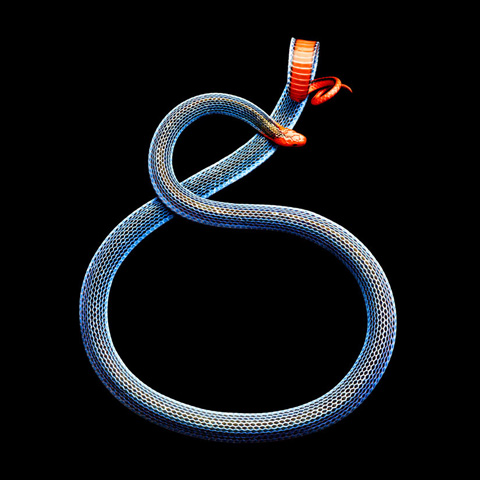
In the Americas there is a saying when it concerns coral snakes; red to yellow, kill a fellow; red to black, venom lack. This is used to distinguish the venomous coral snakes found there with their harmless mimics like milk snakes. However, that saying is not applicable for the coral snakes of the Malaysian forest as they look very different. This is the spectacular but deadly Blue Malayan Coral Snake (Calliophis bivirgatus). It's warning coloration consist of its brilliant red head, tail and belly and the electric blue bands running down it's body. When threatened, it will curl up it's tail to flash the brilliant scarlet undersides.
Beautiful Pit Viper
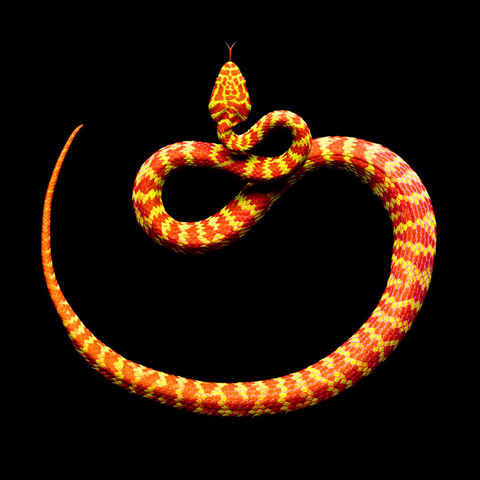
The Crotalinae, commonly known as "pit vipers" or crotaline snakes, are a subfamily of venomous vipers found in Asia and the Americas. They are distinguished by the presence of a heat-sensing pit organ located between the eye and the nostril on either side of the head. Currently, 18 genera and 151 species are recognized: 7 genera and 54 species in the Old World, against a greater diversity of 11 genera and 97 species in the New World. These are also the only viperids found in the Americas. The groups of snakes represented here include rattlesnakes, lanceheads and Asian pitvipers. The type genus for this subfamily is Crotalus, of which the type species is the timber rattlesnake, C. horridus
Coral Snake
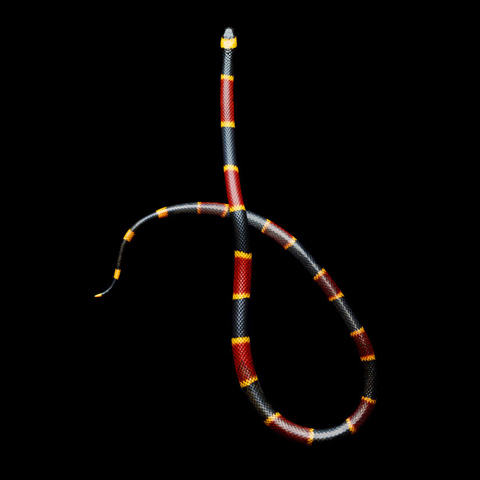
The coral snakes are a large group of elapid snakes that can be subdivided into two distinct groups, Old World coral snakes and New World coral snakes. There are 11 species of Old World coral snake in one genus (Calliophis), and over 65 recognized species of New World coral snakes in three genera (Leptomicrurus, Micruroides, and Micrurus).
Emerald Tree Boa with babies
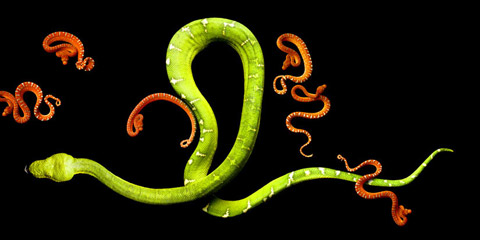
Adults grow to about 6 feet (1.8 m) in length. They have highly developed front teeth that are likely proportionately larger than those of any other non-venomous snake. The color pattern typically consists of an emerald green ground color with a white irregular interrupted zigzag stripe or so-called 'lightning bolts' down the back and a yellow belly. The bright coloration and markings are very distinctive among South American snakes. Juveniles vary in color between various shades of light and dark orange or brick-red before ontogenetic coloration sets in and the animals turn emerald green (after 9–12 months of age). This also occurs in Morelia viridis, a species in which hatchlings and juveniles may also be canary yellow or brick-red. As opposed to popular belief, yellow juveniles (as in the green tree python) do not occur in the emerald tree boa.
Philippine Pit Viper
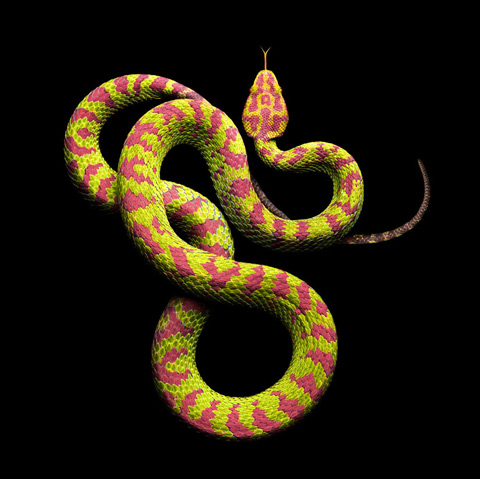
Trimeresurus flavomaculatus is a venomous pitviper species found in the Philippines. Three subspecies are currently recognized,
King Cobra
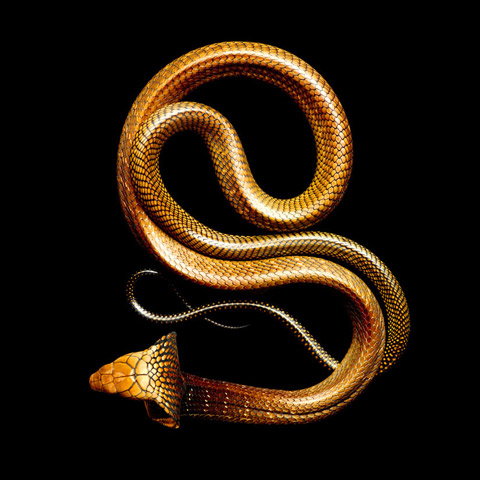
The king cobra (Ophiophagus hannah) is the world's longest venomous snake, with a length up to 5.6 m (18.5 ft). This species, which preys chiefly on other snakes, is found predominantly in forests from India through Southeast Asia to the Philippines and Indonesia. Despite the word "cobra" in its name, this snake is not a member of Naja ("true cobras") but belongs to its own genus.
Rhinocerus Viper
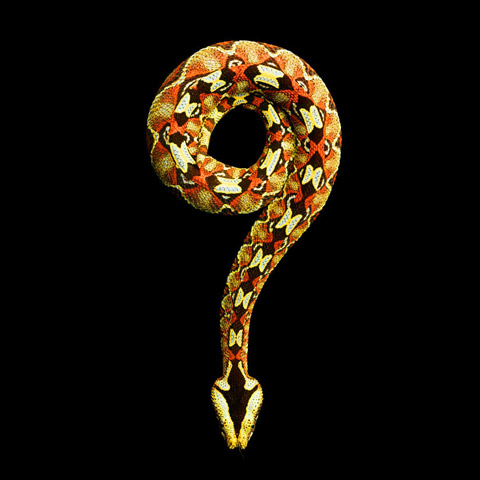
coloured venomous snake of the family Viperidae that inhabits rainforests and swamps of West and Central Africa. It prefers wet or damp environments and can even be found on plantations. The body is massive with rough and strongly keeled scales. It possesses a green or blue triangular head with a large black arrowhead mark on the top and two or three pairs of hornlike scales on the tip of the snout. It averages 70–90 cm (28–35 inches) in length, but specimens as long as 1.3 metres (4.3 feet) are known. The body is made up of a spectacular velvetlike pattern of triangles, rectangles, and diamond-shaped areas that are coloured red, yellow, blue, green, and black. The pattern is reminiscent of that of the Gaboon viper; however, the pattern of the rhinoceros viper is more colourful.
Mussarana (juvenile)
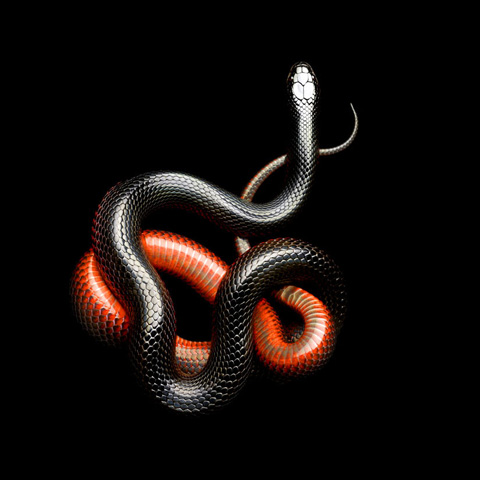
The mussurana or musurana (Portuguese muçurana) are six species of oviparous colubrid snakes belonging to the genus Clelia. They are distributed from Guatemala to Brazil. They specialize in ophiophagy, i.e., they attack and eat other snakes. They have other popular names in various countries, such as zopilota in Central America and cribo on some Caribbean islands
The mussurana has a length of 1.5 to 1.6 m, but it can grow up to 2.4 m. When young, its dorsal color is light pink, which becomes lead-blue when it is adult. The ventral color is whitish yellow. It has 10 to 15 strong teeth at the back of the mouth (opisthoglyphous teeth) which it uses to grasp the head of the attacked snake and push it into its gullet. Then it coils its body around the victim, killing it by constriction (this is the reason this species is called a pseudoboa). Ingestion of the whole body follows. The long body of the ingested snake is compressed as a wave in order to fit into the mussurana's gastrointestinal system.
Red Tail Boa
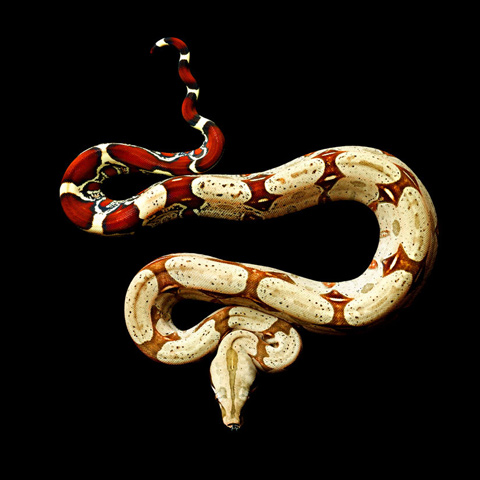
All subspecies are referred to as "Boa constrictors", while the nominate subspecies, B. c. constrictor, is often referred to specifically as the "red-tailed boa". Within the exotic pet trade it is also known as a "BCC", an abbreviation of its scientific name, to distinguish it from other Boa constrictor subspecies such as the Boa constrictor imperator which is also regularly, and erroneously, referred to as a "red-tailed boa".
Source
